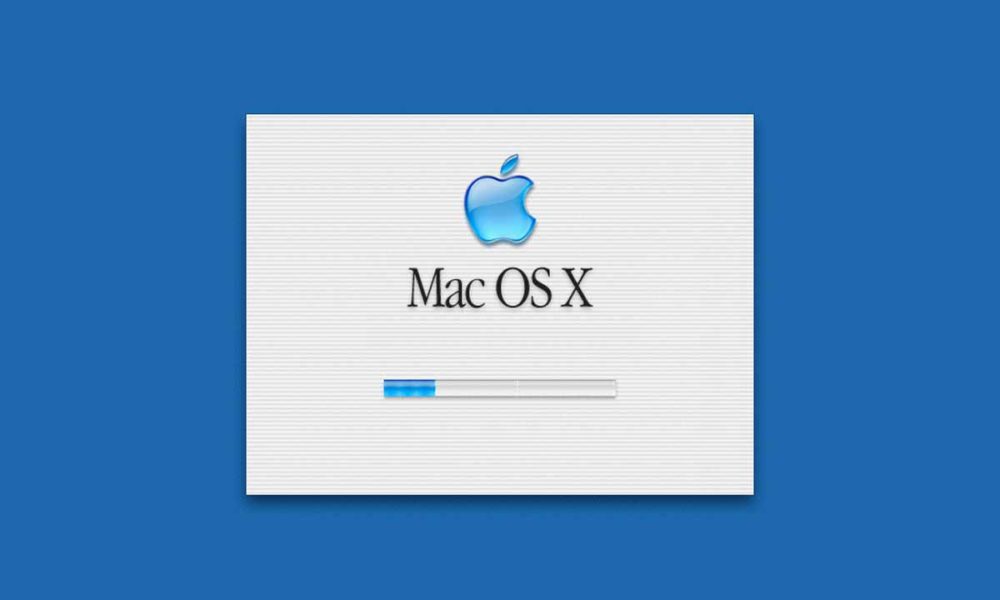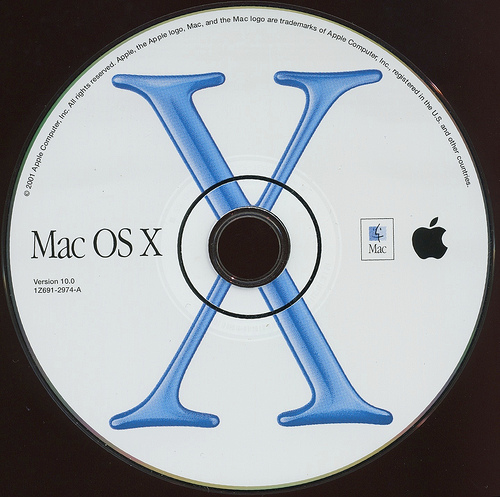Mac Os X 10.0
(There's no video for Mac OS X 10.0 BETA yet. Please contribute to MR and add a video now!)
(There's no screenshot for Mac OS X 10.0 BETA yet. Please contribute to MR and add a screenshot now!)Make Offer - Apple Mac OS X Version 10.0.3 1Z691-3064 Install CD Disk M8518LL/A iMac Lot of OS X Install DVD 10.2 OS 9.1 Software Restore Apple Hardware Test $19.99. Mac OS X 10.0.1 is the first-ever update to Mac OS X, as well as to Mac OS X 10.0 'Cheetah'. It was released on April 13, 2001, and its build number is 4L13. What's New in Mac OS X 10.0.1 The improvements included better support for third-party USB devices, Classic environment compatibility and overall application support.
Make Offer - Apple Mac OS X Version 10.0.3 1Z691-3064 Install CD Disk M8518LL/A iMac Lot of OS X Install DVD 10.2 OS 9.1 Software Restore Apple Hardware Test $19.99.
What is Mac OS X 10.0 BETA? Is an Mac OS X but in an older version for Macintosh/power Mac G3's osx_100_4k78_install.iso(565.39 MiB / 592.86 MB) / ISO image 8 / 2021-03-10 / cc722facc4dbdfc96c770e876538c8e2f8d06533 / / Architecture
From Mac OS 9.0 up to Mac OS 10.7 Compatibility notes Emulating this? It should run fine under: SheepShaver |

| A version of the OS X operating system | |
| 300px | |
| Developer | Apple Computer |
|---|---|
| Written in | {{#property:p277}} |
| Source model | Closed source (with open source components) |
| Released to manufacturing | March 24, 2001; 20 years ago |
| Latest release | 10.0.4 / June 22, 2001; 19 years ago[1] |
| Platforms | PowerPC |
| Kernel type | Hybrid (XNU) |
| License | Apple Public Source License (APSL) and Apple end-user license agreement (EULA) |
| Preceded by | |
| Succeeded by | Mac OS X 10.1 Puma |
| Official website | Apple - Mac OS X at the Wayback Machine (archived June 29, 2001) |
| Support status | |
| Unsupported | |
Mac OS X version 10.0, code namedCheetah, is the first major release of OS X, Apple’s desktop and server operating system. Mac OS X 10.0 was released on March 24, 2001 for a price of US$129. It was the successor of the Mac OS X Public Beta and the predecessor of Mac OS X 10.1.
Mac OS X 10.0 was a radical departure from the previous classic Macintosh operating system (Mac OS) and was Apple’s long awaited answer for a next generation Macintosh operating system. It introduced a brand new code base completely separate from Mac OS 9's, as well as all previous Apple operating systems. Mac OS X introduced the new DarwinUnix-like core and a completely new system of memory management. Cheetah proved to be a rocky start to the Mac OS X line, plagued with missing features and performance issues, although it was praised for being a good start to an operating system still in its infancy, in terms of completeness and overall operating system stability. Unlike later releases of Mac OS X, the cat-themed code name was not used in marketing the new operating system.
System requirements
The system requirements for Mac OS X 10.0 were not well received by the Macintosh community, as at the time the amount of RAM standard with Macintosh computers was 64 megabytes (MB), while the Mac OS X 10.0 requirements called for 128 MB of RAM. In addition, processor upgrade cards, which were quite popular for obsolete pre-G3 Power Macintosh computers, were not supported (and never officially have been, but can be made to work through third-party utility programs).
- Supported Computers:Power Macintosh G3, G3 B&W, G4, G4 Cube, iMac, PowerBook G3 (except for the original 'Kanga' model), PowerBook G4, iBook
- RAM:
- 128 MB (unofficially 64 MB minimum)
- Hard Drive Space:
- 1,500 MB (800 MB for the minimal install)

Features
- Dock — the Dock was a new way of organizing one's Mac OS X applications on a user interface, and a change from the classic method of Application launching in previous Mac OS systems.
- Mach 3.0 — the Mach 3.0 microkernel was part of the XNU kernel for Mac OS X, and was one of the largest changes from a technical standpoint in Mac OS X.
- Terminal — the Terminal was a feature that allowed access to Mac OS X's underpinnings, namely the Unix core. Mac OS had previously had the distinction of being one of the few operating systems with no command line interface at all.
- Mail — email client.
- TextEdit — new on-board word processor, replacement to SimpleText.
- Full preemptive multitasking support, a long awaited feature on the Mac.
- PDF Support (create PDFs from any application)
- Aqua UI — new user interface
- Built on Darwin, a Unix-like operating system.
- Support for Carbon and CocoaAPIs
- Sherlock — desktop and web search engine.
- Protected memory — memory protection so that if an application corrupts its memory, the memory of other applications will not be corrupted.
Limitations
Mac Os X Cheetah
- File-sharing client — The system can only use TCP/IP,[2] not AppleTalk, to connect to servers sharing the Apple Filing Protocol. The System cannot use SMB to connect to Windows or Samba servers.
- File-sharing server — As a server, the system can share files using only the Apple Filing Protocol (over TCP/IP), HTTP, SSH, and FTP.
Mac Os X 10.0 Virtualbox
Criticism and Problems
While the first Mac OS X release was an advanced operating system in terms of its technical underpinnings, and in relation to its brand new code-base, Mac OS X 10.0 was heavily criticized. There were three main reasons for criticism:
- Interface Responsiveness — The brand-new Aqua interface was sluggish at best. It was heavily criticized for its slow application launch speed and user interface response speed. The interface response times compared to earlier Apple operating systems showed that Mac OS X still had a long way to go in terms of interface performance.
- Stability — While ‘theoretical’ stability in Mac OS X was much better than stability in Mac OS 9,[citation needed] Mac OS X was riddled with fatal bugs that caused kernel panics, especially in complex hardware setups.
- Missing Features and Hardware Compatibility Issues — Another reason for criticism were the missing features, especially missing DVD playback, as well as CD burning, both of which had been available in the prior version of Mac OS. Mac OS X 10.0.2 included the necessary software frameworks to allow iTunes 1.1.1 to provide audio CD burning support, but data CD burning had to wait until version 10.1. There were also several issues in respect to missing printer and other hardware drivers.
The heavy criticism of Mac OS X 10.0 ultimately resulted in Apple offering a free upgrade to Mac OS X 10.1.[3]
Multilingual snags
With Mac OS X 10.0 began a short era (that ended with Mac OS X 10.2 Jaguar's release) where Apple offered two types of installation CDs: 1Z and 2Z CDs. The difference in the two lay in the extent of multilingual support.
Input method editors of Simplified Chinese, Traditional Chinese, and Korean were only included with the 2Z CDs. They also came with more languages (the full set of 15 languages), whereas the 1Z CDs came only with about eight languages and could not actually display simplified Chinese, traditional Chinese and/or Korean (except for the Chinese characters present in Japanese Kanji). A variant of 2Z CDs were introduced when Mac OS X v10.0.3 was released to the Asian market (this variant could not be upgraded to version 10.0.4). The brief period of multilingual confusion ended with the release of v10.2.[citation needed] Currently, all Mac OS X installer CDs and preinstallations include the full set of 15 languages and full multilingual compatibility.
Release history
| Version | Build | Date | OS name | Notes |
|---|---|---|---|---|
| 10.0 | 4K78 | March 24, 2001 | Darwin 1.3.1 | Original retail CD-ROM release |
| 10.0.1 | 4L13 | April 14, 2001 | Darwin 1.3.1 | Apple: Mac OS X 10.0: Software Update 1.3.1, 10.0.1 Update, and Epson Printer Driver Update Provide Feature Enhancement, Address Issues |
| 10.0.2 | 4P12 | May 1, 2001 | Darwin 1.3.1 | |
| 10.0.3 | 4P13 | May 9, 2001 | Darwin 1.3.1 | Apple: 10.0.3 Update and Before You Install Information |
| 10.0.4 | 4Q12 | June 21, 2001 | Darwin 1.3.1 | Apple: 10.0.4 Update and Before You Install Information |
References
- ↑http://www.apple.com/support/downloads/macosxupdate_10_0_4.html
- ↑'Mac OS X 10.0: Connecting to AppleShare or File Sharing Requires TCP/IP'. September 18, 2003. Retrieved February 22, 2010.<templatestyles src='Module:Citation/CS1/styles.css'></templatestyles>
- ↑First Major Upgrade to Mac OS X Hits Stores This Weekend.
External links
- Mac OS X v10.0 review at Ars Technica
| Preceded by Mac OS 9 | OS X 10.0 2001 | Succeeded by OS X 10.1 |
